
6 Ways to Improve Customer Experience(CX) with Customer Feedback
Understanding and meeting customer needs is not just a competitive advantage; it's necessary for every Saas company today. Customer Experience (CX) has emerged as a pivotal cornerstone for businesses aiming to build loyalty, enhance satisfaction, and foster long-term relationships.
But how do you tap into the authentic voice of your customers to sculpt an exceptional CX? The answer lies in the treasure trove of insights available in customer feedback.
Customer feedback, a direct pipeline to the hearts and minds of those who interact with your products and services, is more than just opinions and comments. It's a powerful tool that provides a window into what's working, what's missing, and what needs refining. From understanding specific pain points to uncovering hidden opportunities, customer feedback paves the way for innovation and improvement.
In this blog post, we'll explore a comprehensive guide on harnessing customer feedback's potential to elevate your customer experience. Whether you're a seasoned business leader or just starting on your CX journey, these insights will help you transform feedback into actionable strategies that resonate with your audience and help turn your customer's voice into a driving force for unparalleled customer satisfaction.
How to Improve Customer Experience(CX) with Customer Feedback?
1. Address Feedback Timely
When a customer provides feedback, you must acknowledge it promptly. This shows that their opinion matters and that you are dedicated to improving their experience. A prompt response can help improve customer satisfaction and retain customers.
Timely addressing customer feedback plays a multifaceted role in CX improvement. It meets expectations, builds trust, resolves issues, enhances perceived value, provides competitive advantage, and encourages continuous engagement.
56% of consumers changed their perspective of a company based on how they respond to reviews, according to Podia’s State of Reviews.
It's a practice that resonates with fundamental human desires for acknowledgment and responsiveness, positioning the company as customer-centric and attentive to individual needs and opinions.
Expectation Fulfillment
Customers typically expect prompt responses, especially in a digitalized world where immediate communication is possible. Meeting this expectation by quickly addressing feedback conveys that the organization is attentive and values the customer's input. Satisfaction increases when expectations are met, contributing positively to the overall CX.
A robust customer feedback management system like Rapidr allows businesses to stay connected with their customers, continuously learn from them, and consistently improve their products and services to deliver a superior customer experience and improve product discovery.
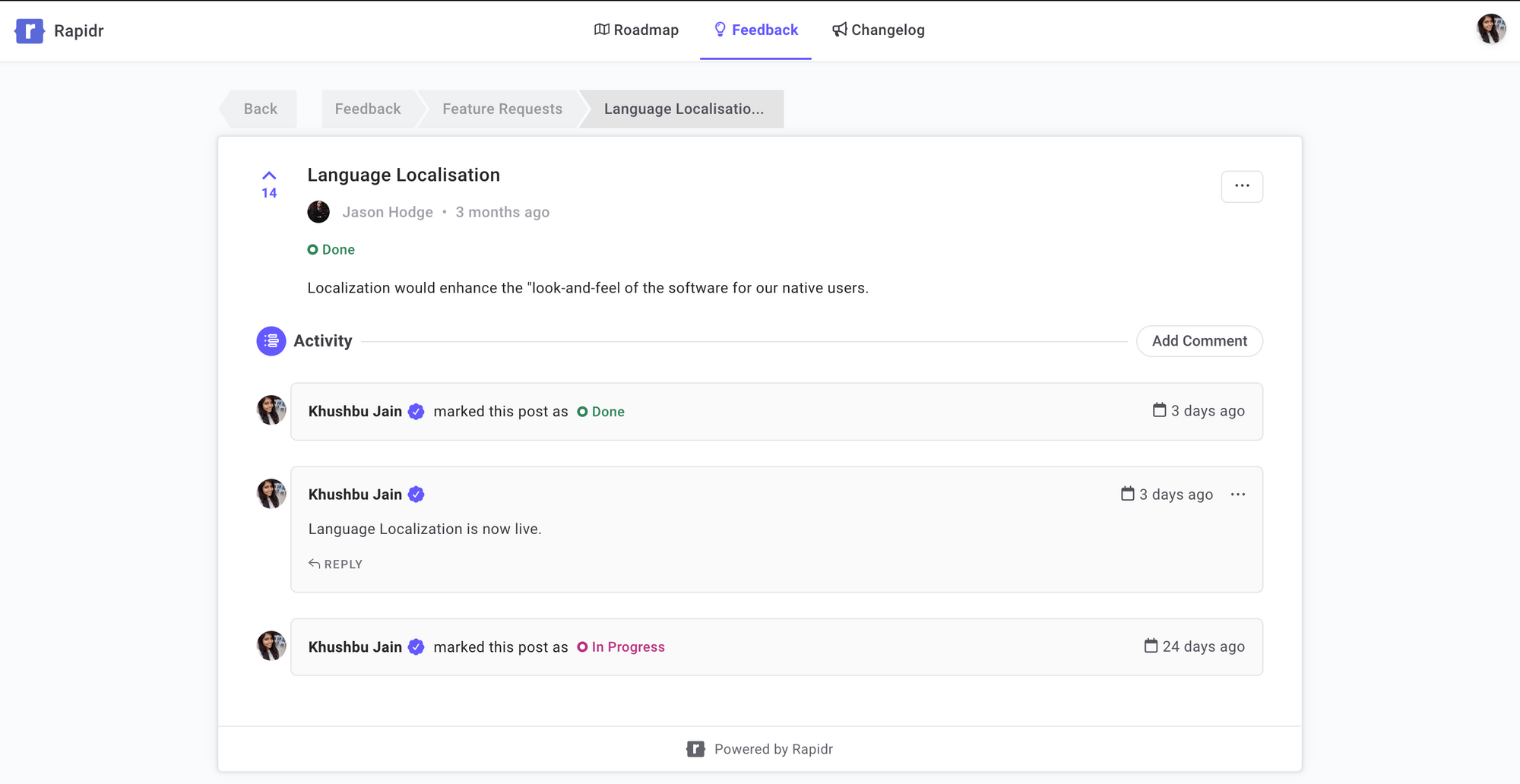
Building Trust and Relationship
Trust is foundational in a customer-company relationship. Promptly addressing feedback shows that the organization takes customer opinions seriously and is committed to improvement. This fosters trust. Long-term trust can lead to loyalty and advocacy, critical components of positive CX.
Resolving Issues Effectively
Many feedback or complaints might be related to a customer's immediate problems. Timely addressing such feedback can lead to rapid resolution, preventing the escalation of the crisis. The customer's problem is solved efficiently, leading to a positive experience and possibly turning a negative situation into a positive one.
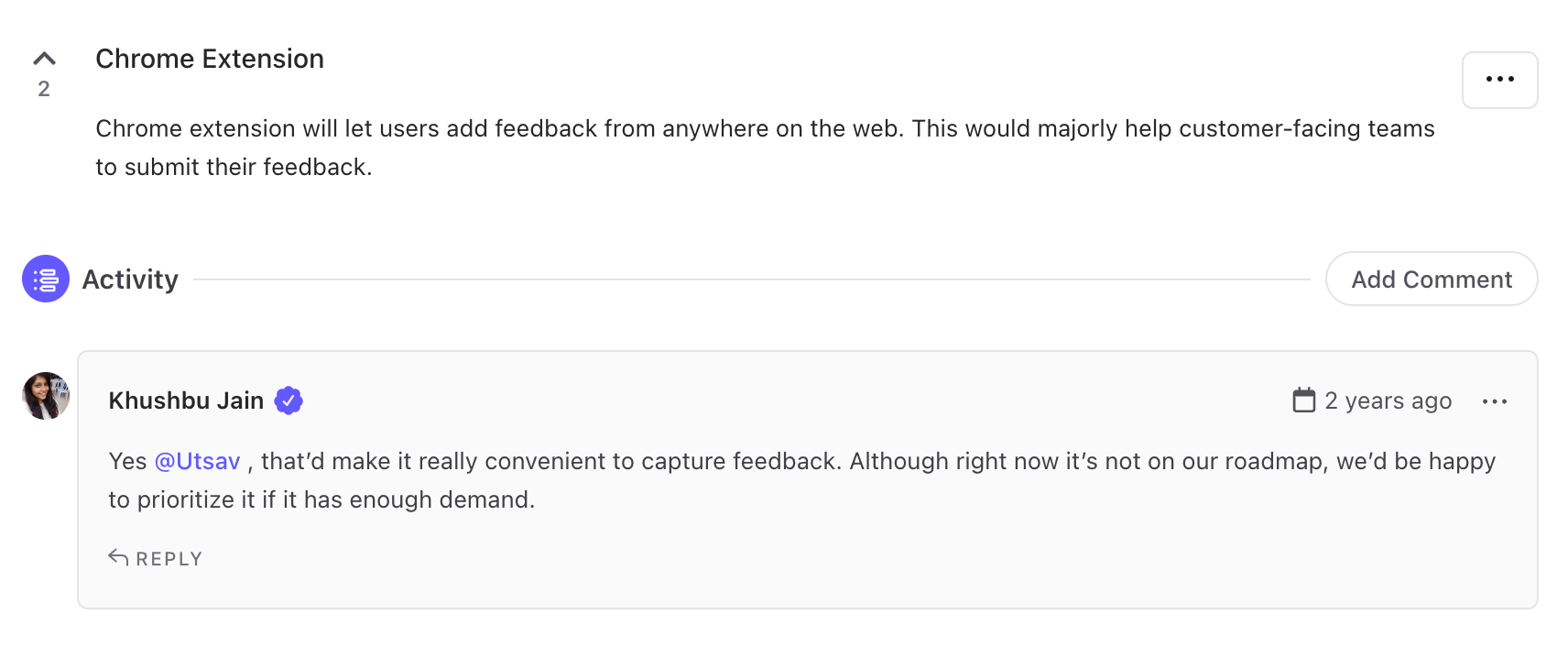
Competitive Advantage
The marketplace is often crowded, and differentiation can be challenging. Being known for rapid and thoughtful responses to customer feedback can be a differentiating factor. By continuously improving based on customer feedback, a company can differentiate itself from competitors, create an effective product-led growth strategy, and retain more customers.
Encouraging Continuous Engagement
Customer engagement keeps them connected with the brand. Timely response encourages more feedback and interaction, keeping the communication channels open and active. This ongoing engagement can lead to a more dynamic customer relationship, further enriching the CX.
Rapidr helps SaaS companies be more customer-centric by consolidating feedback across different apps, prioritizing requests, having a discourse with customers, and closing the feedback loop.
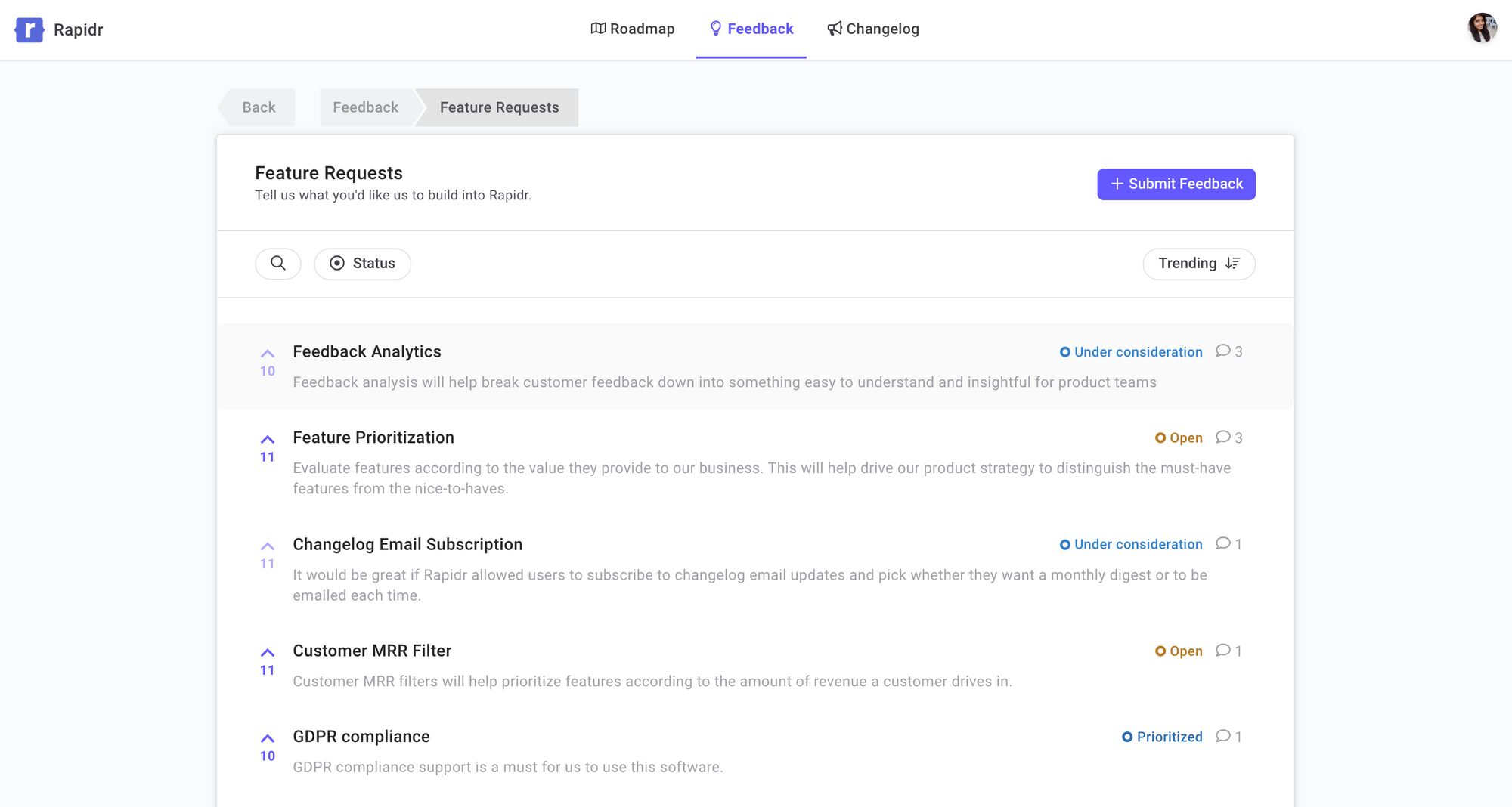
2. Utilize Feedback to Improve Products and Services
One of the most critical uses of customer feedback is identifying ways to improve your products and services. If customers frequently report specific issues, it's an indication that these areas need improvement. Addressing these concerns will improve customer experience and demonstrate your responsiveness to customer needs, even if it's negative feedback.
Collecting Customer Feedback
Utilize various channels like surveys, feedback portals, customer reviews, interviews, and focus groups. Gathering feedback from multiple sources ensures a comprehensive understanding of customer opinions and experiences. Rich data set for understanding customer perspectives.
Create a centralized place for product feedback to keep track of different types of customer feedback and improve SaaS products while listening to their customers.

Identify Pain Points and Frustrations
Customers often face specific issues that might not be apparent to the organization. Collect feedback through surveys, reviews, or interviews and categorize them to identify common problems. Tailor solutions to these specific issues, making the customer journey smoother and more satisfying for building a customer-centric business that resonates with its audience at a deeper level.
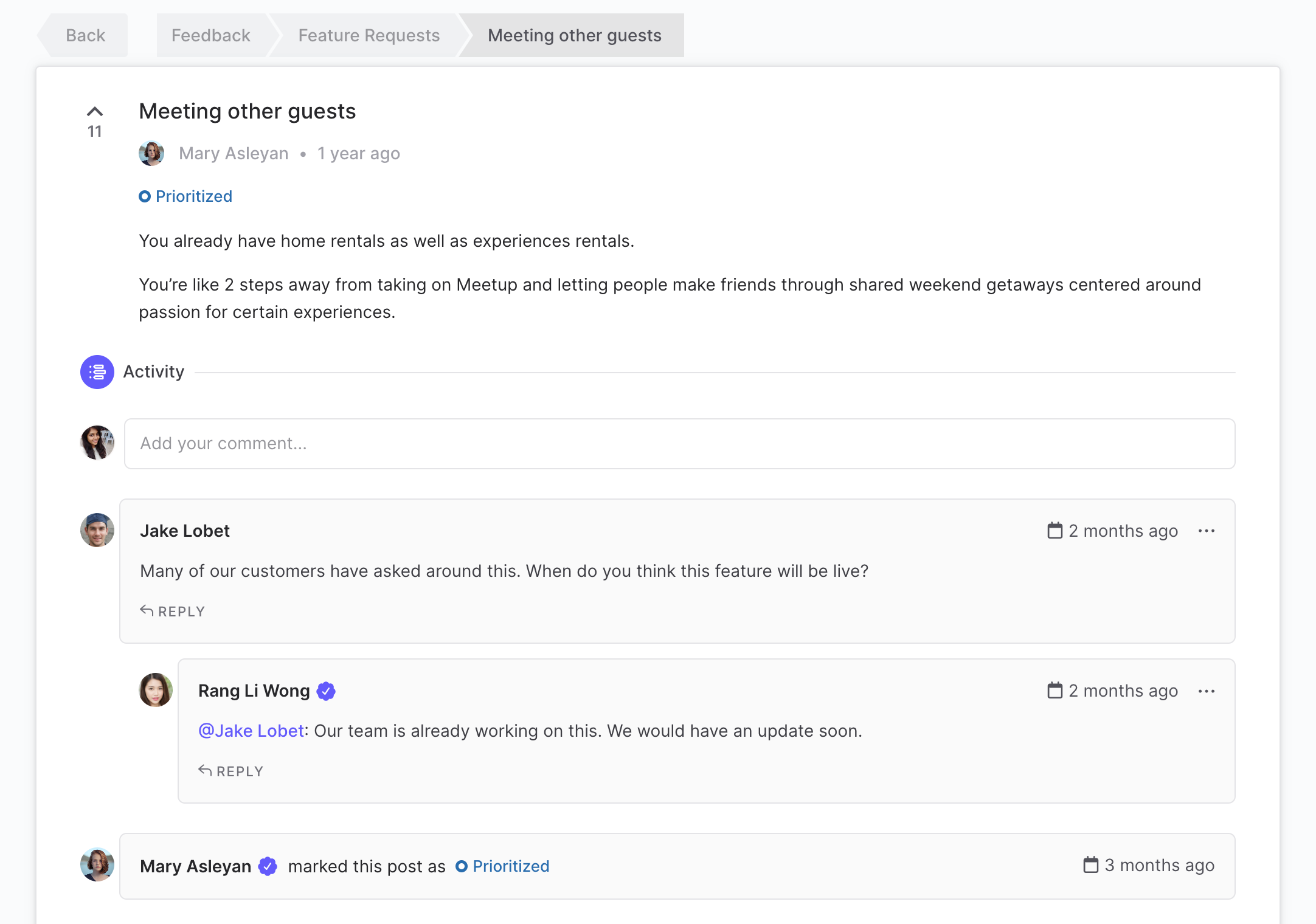
Segmenting and Analyzing Feedback
Use customer feedback tools to segment user feedback based on demographics, purchase history, or other relevant categories. Different customer segments may have different needs and preferences; understanding these allows for more targeted improvements. Clearer insights into specific customer needs and preferences.
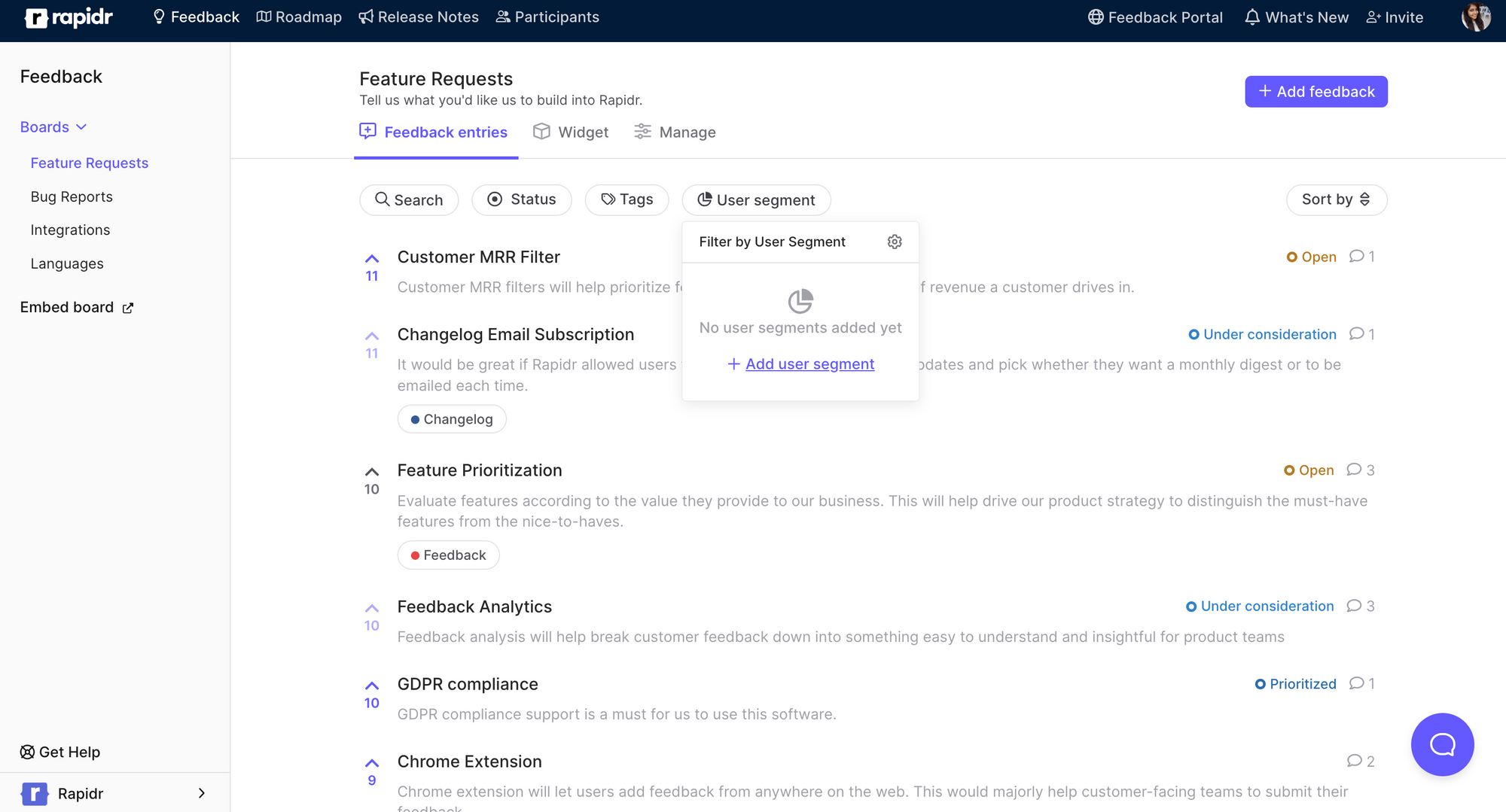
Identifying Key Areas for Improvement: Analyze feedback to find common themes, patterns, or areas where customers are dissatisfied. Pinpointing exact areas of concern allows for targeted interventions and improvements. A focused plan of action to address actual customer pain points with a public roadmap.
3. Personalize Customer Experience and Interactions
Customers are more likely to feel valued and satisfied when they receive a personalized experience. Use customer feedback to learn about individual customer preferences and tailor their experience accordingly. This could include personalized product recommendations, unique discounts, or customized communications.
Direct feedback from users often highlights areas where a product or service might be lacking. Analyze feedback to pinpoint deficiencies in quality or performance. Make necessary adjustments or innovations to improve the product or service, reflecting customer needs.
Personalization can lead to more engaged and satisfied customers. Use feedback to understand individual preferences and behaviors. Create personalized offers, recommendations, or support, enhancing the customer experience.
Customer feedback often includes insights into how customers prefer to interact with your business. This could include their preferred contact method, communication frequency, and content type they appreciate. By tailoring your communication based on this feedback and personalization, you can enhance the customer experience.
4. Develop a Feedback Loop
A feedback loop is a system where the responses to a particular action influence the next steps. It's an ongoing process of improvement that helps maintain high levels of customer satisfaction. By implementing a feedback loop, you show customers you're dedicated to constantly improving based on their insights.
Implementing Changes Based on Feedback
Develop action plans to address the identified areas for improvement, whether in products, services, support, or other aspects. Acting on feedback demonstrates a commitment to customer-centricity and continual improvement. Tangible enhancements that directly address customer concerns.
Listen to the customers' voices through various channels like email, social media, website feedback, and chatbots. Keep them informed about which requests are in progress or planned and which are done with a public roadmap.
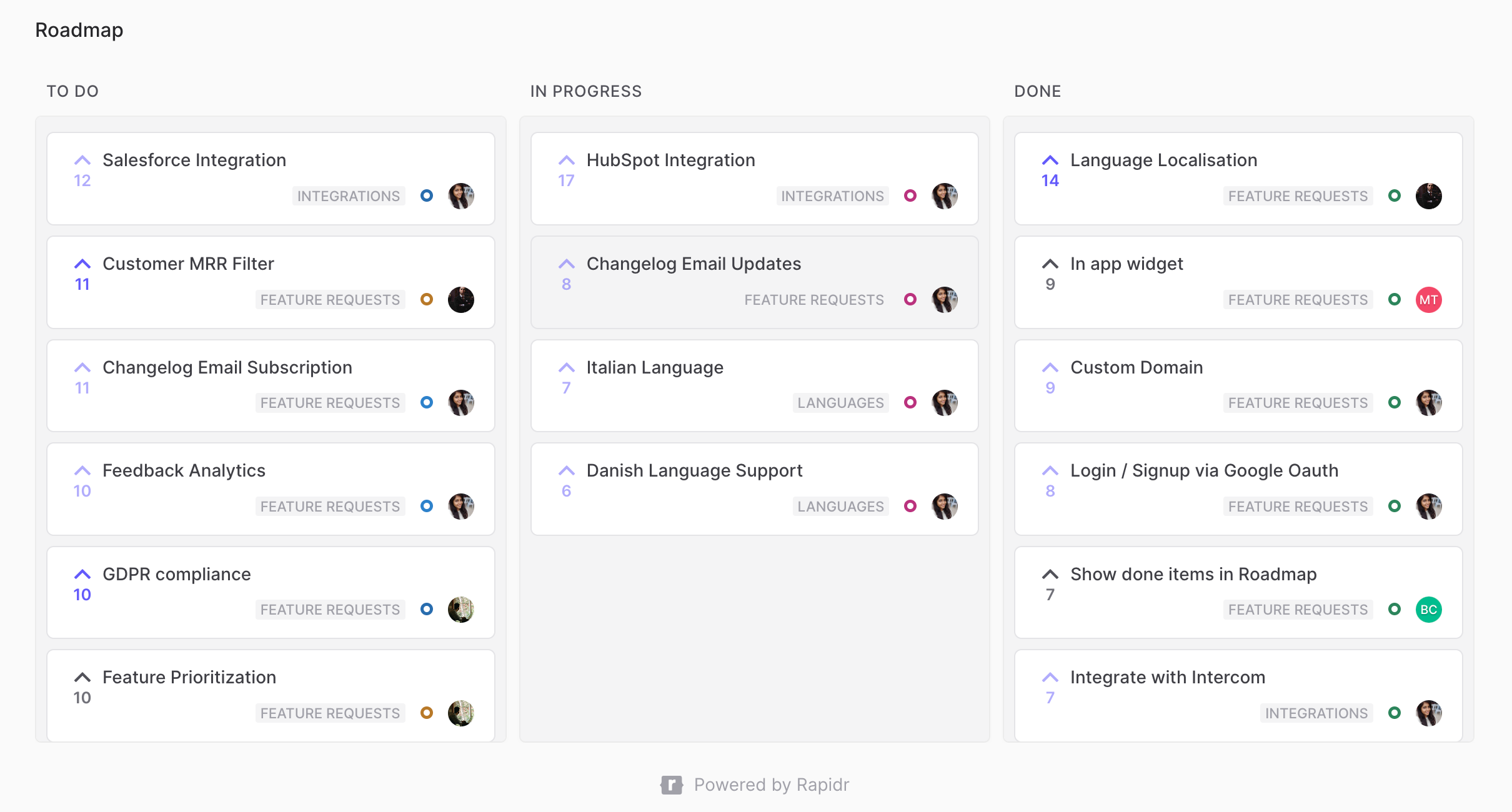
Communicating with Customers
Inform customers about the changes made based on feedback and engage in two-way communication. Transparency builds trust and shows customers that their opinions are valued and acted upon.
Share your findings with team members, executives, and other stakeholders to drive decision-making. When you release new features or updates, reach out to users to see how they find them. Ensure that every product team member, from designers to developers to marketers, understands the changes and their rationale.
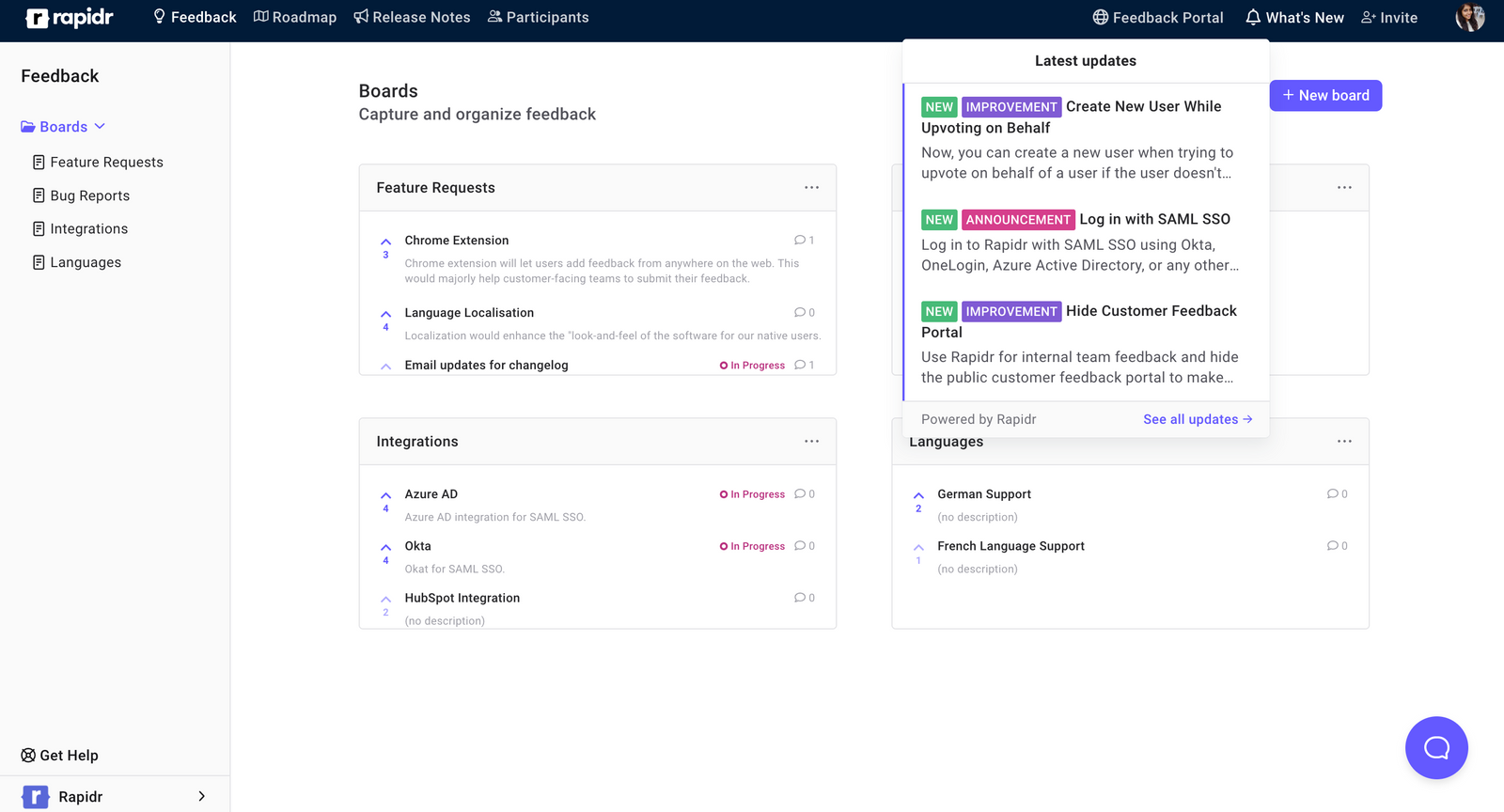
Monitoring and Evaluating Changes
Implement continuous monitoring through customer profiles, tracking customer behavior, or utilizing customer satisfaction metrics like NPS. Ongoing evaluation ensures that changes are effective and allows for adjustments as needed. Sustained alignment with customer needs and continuous improvement.
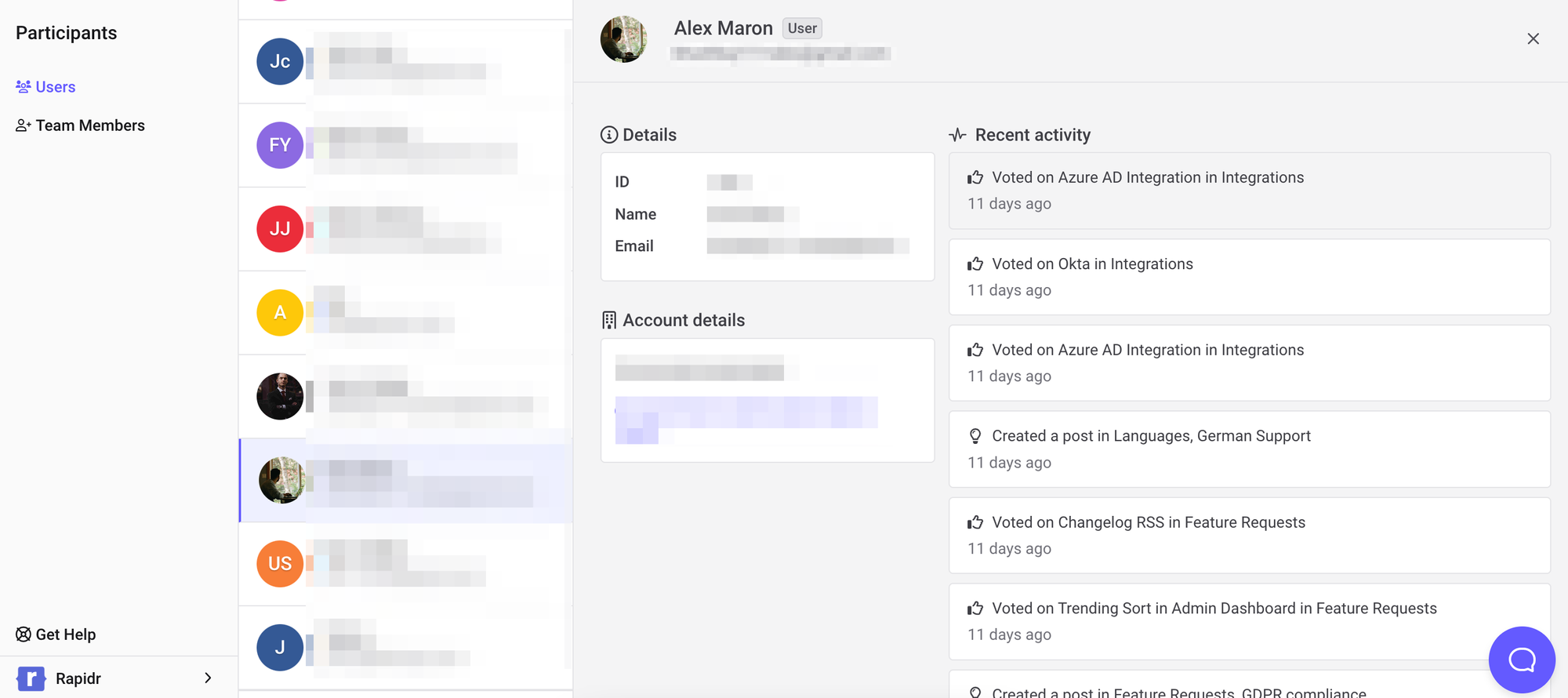
Building a Community and Encouraging Co-Creation
Customers value having a voice in their products or services. Utilize platforms and community feedback forums where customers can share ideas, vote on new features, and engage in dialogue with the company. Foster a sense of community and ownership, and leverage customer insights to co-create products or services.
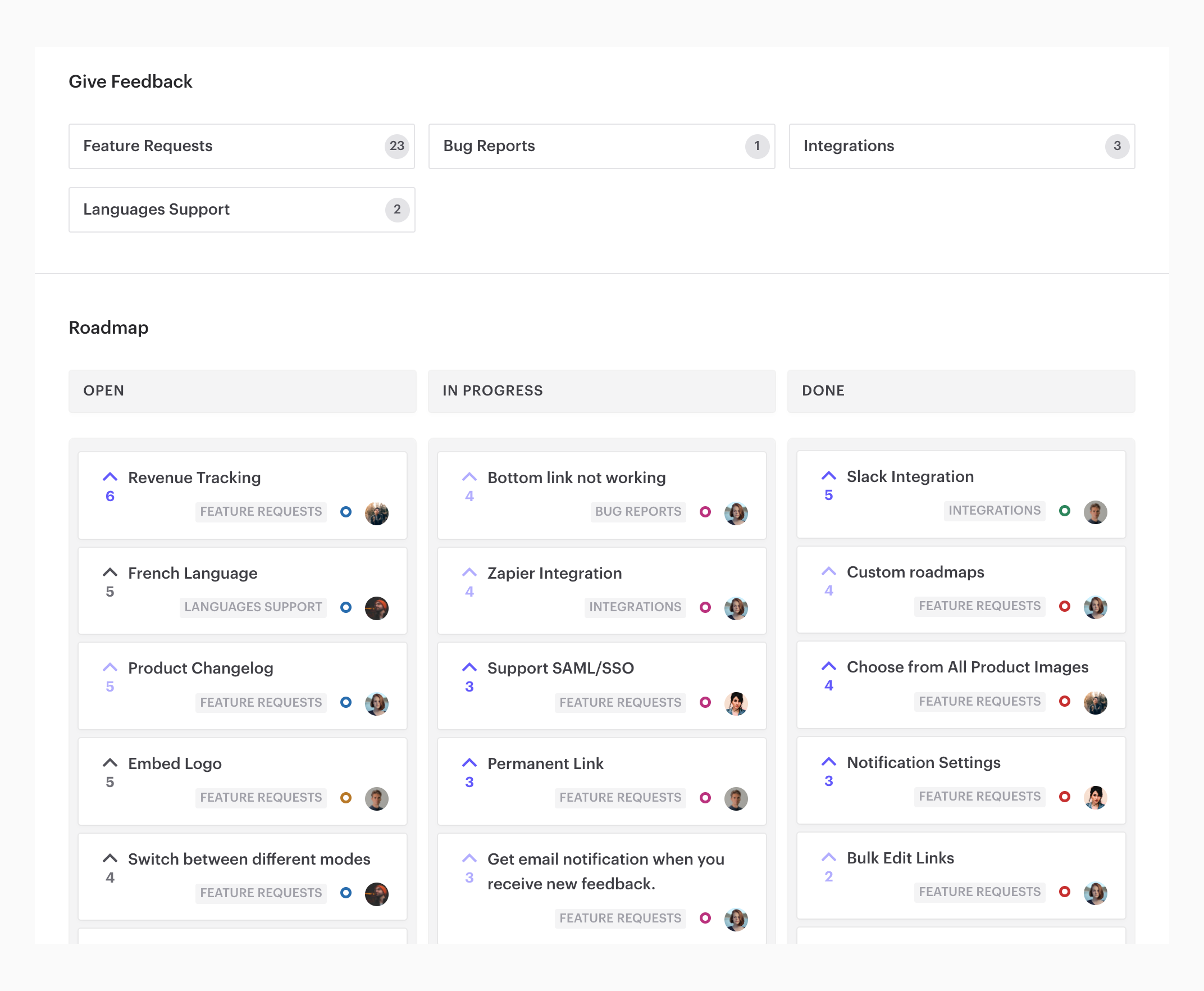
5. Improve Customer Service
Customer support is often where customers express dissatisfaction. Review feedback from support interactions and assess common complaints or praises.
Use customer feedback to identify areas where your team could benefit from additional training. Train support staff accordingly, implement an internal team feedback system, or revise support procedures to enhance responsiveness and customer satisfaction.
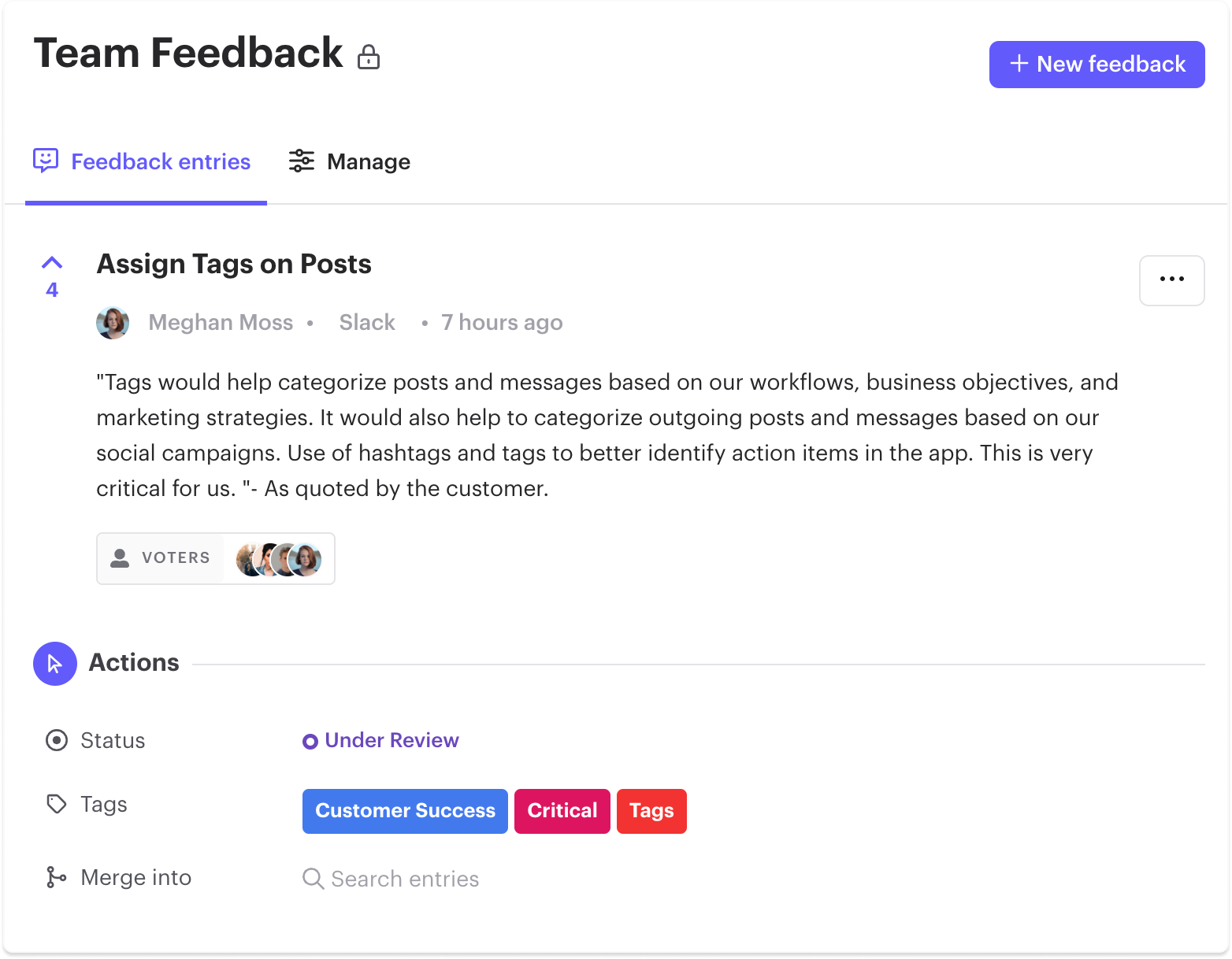
Fostering a Customer-Centric Culture
Train employees to focus on customer needs, include customer feedback in decision-making processes, and reward customer-centric behavior. A company-wide commitment to customer-centricity ensures customer feedback is central to all aspects of the business. A sustainable approach to continuous CX improvement.

Improve customer journey
Analyzing and understanding the various touchpoints in the customer journey allows businesses to identify areas for improvement, whether it's simplifying processes, offering targeted recommendations, or providing consistent experiences across channels. Rapidr’s idea management software makes tracking ideas and feedback in the customer journey easy.
Streamlining these elements leads to a more intuitive and enjoyable interaction with the company, reducing frustration and making customers feel understood and valued.
6. Measuring and Tracking CX Over Time
Continuous monitoring of CX is essential for ongoing improvement. Implement regular feedback mechanisms like Net Promoter Score (NPS) surveys or periodic customer interviews. Detect trends, make timely adjustments, and continuously align with customer expectations.
Remember, it's essential to ask for feedback in a manner that respects the customer's time and opinions. Regularly updating customers on how their feedback is used can also encourage more customers to participate in the process.
Conclusion
By employing this structured approach, an organization can effectively use customer feedback to drive improvements in CX. This process promotes a holistic understanding of customer needs, targeted interventions, continuous monitoring, transparency, and pervasive customer-centric culture. It leverages feedback not just as isolated data points but as vital insights to shape products, services, interactions, and the overall ethos of the organization.
A feedback management tool will help you understand your users' journey and consistently strive to deliver value, organize feedback, communicate new feature releases, and achieve product-market fit
Incorporate customer feedback into your product development to improve customer experience.
- Set up a Customer Feedback System
- Collect Actionable Feedback from Customers and Teammates
- Analyze, Prioritize, and Categorize Feedback Data to Make Sense of It
- Act and Have a Specific Product Evolution Plan
- Announce New Features and Product Updates
With Rapidr, you can collect, analyze, and organize feedback and engage with customers as their feedback moves through the development process. Sign up for free and set up a complete customer feedback system to inform and enhance your customer experience.

